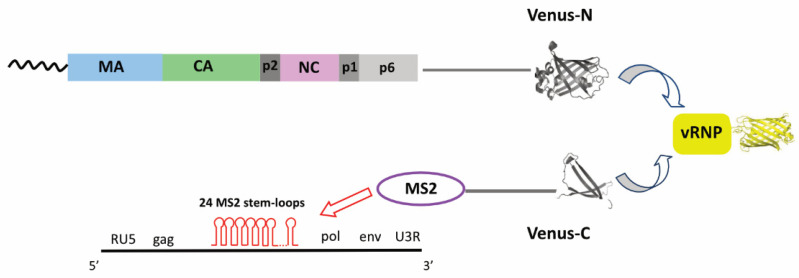Figure 3.
In BiFC assays, the two halves of Venus fluorescent protein are fused to two interacting proteins of interest, as for example Gag and MS2 proteins [147]. One of the most widely used strategies to monitor gRNA trafficking in cells consists in the insertion of 24 stem-loop sequences in the target RNA which are then recognized with high affinity and specificity by the bacteriophage MS2 coat protein. While the two halves of Venus protein are non-fluorescent, the interaction of the partners tethers the fused fluorescent fragments in proximity, which facilitates the restoration of Venus fluorescence. BiFC is a reliable and sensitive approach that also revealed molecular interactions in other viral contexts, such as the Herpes virus [148].

